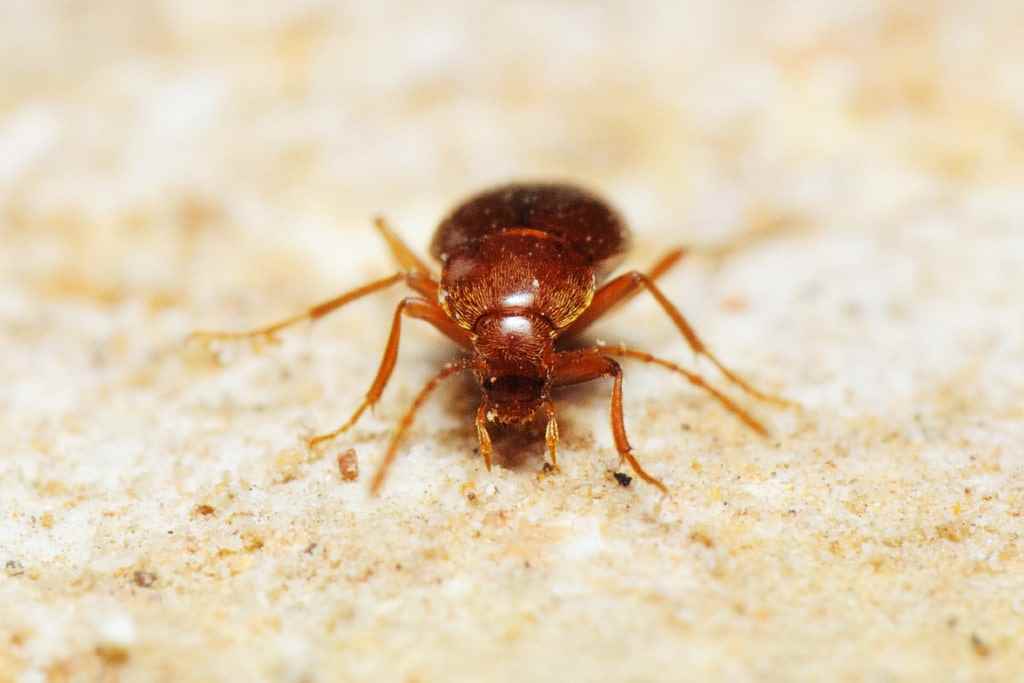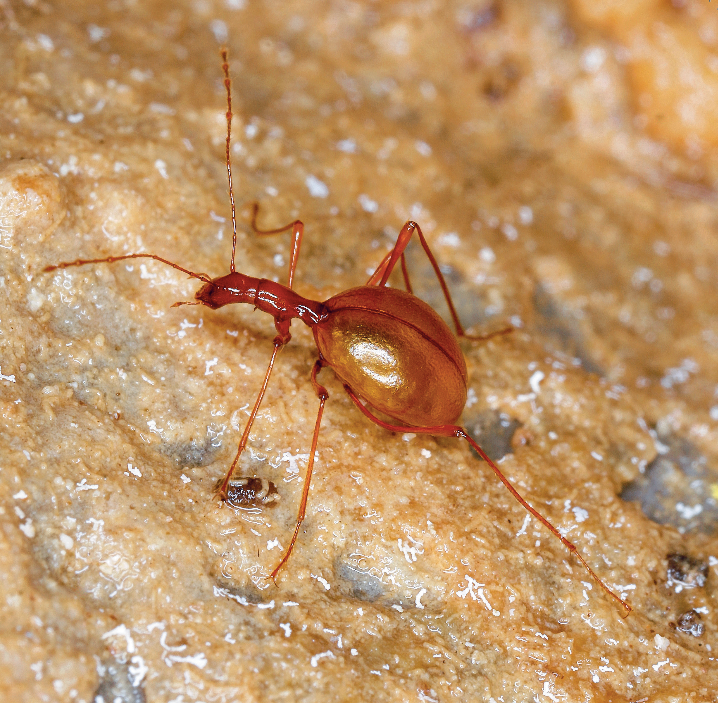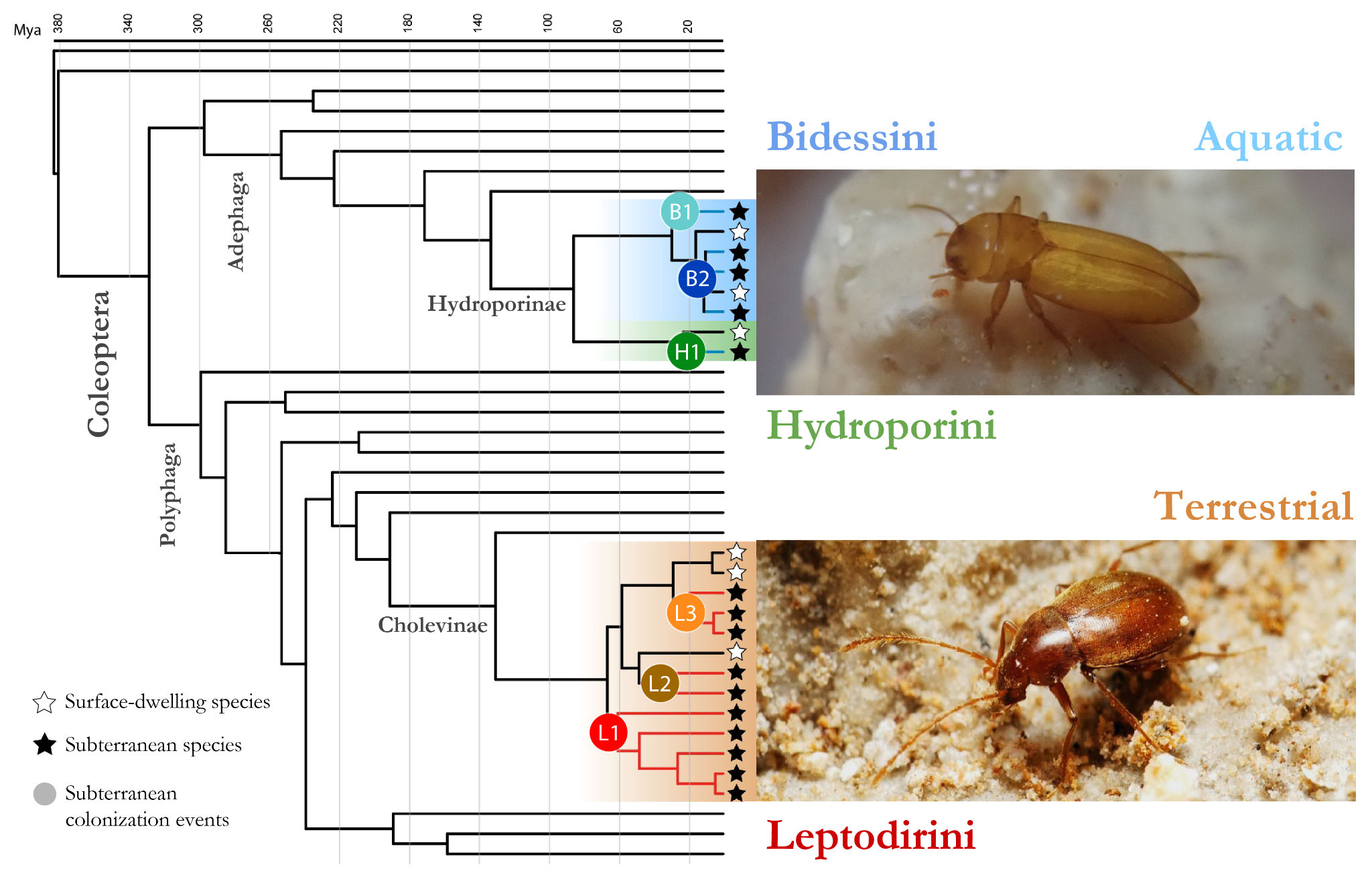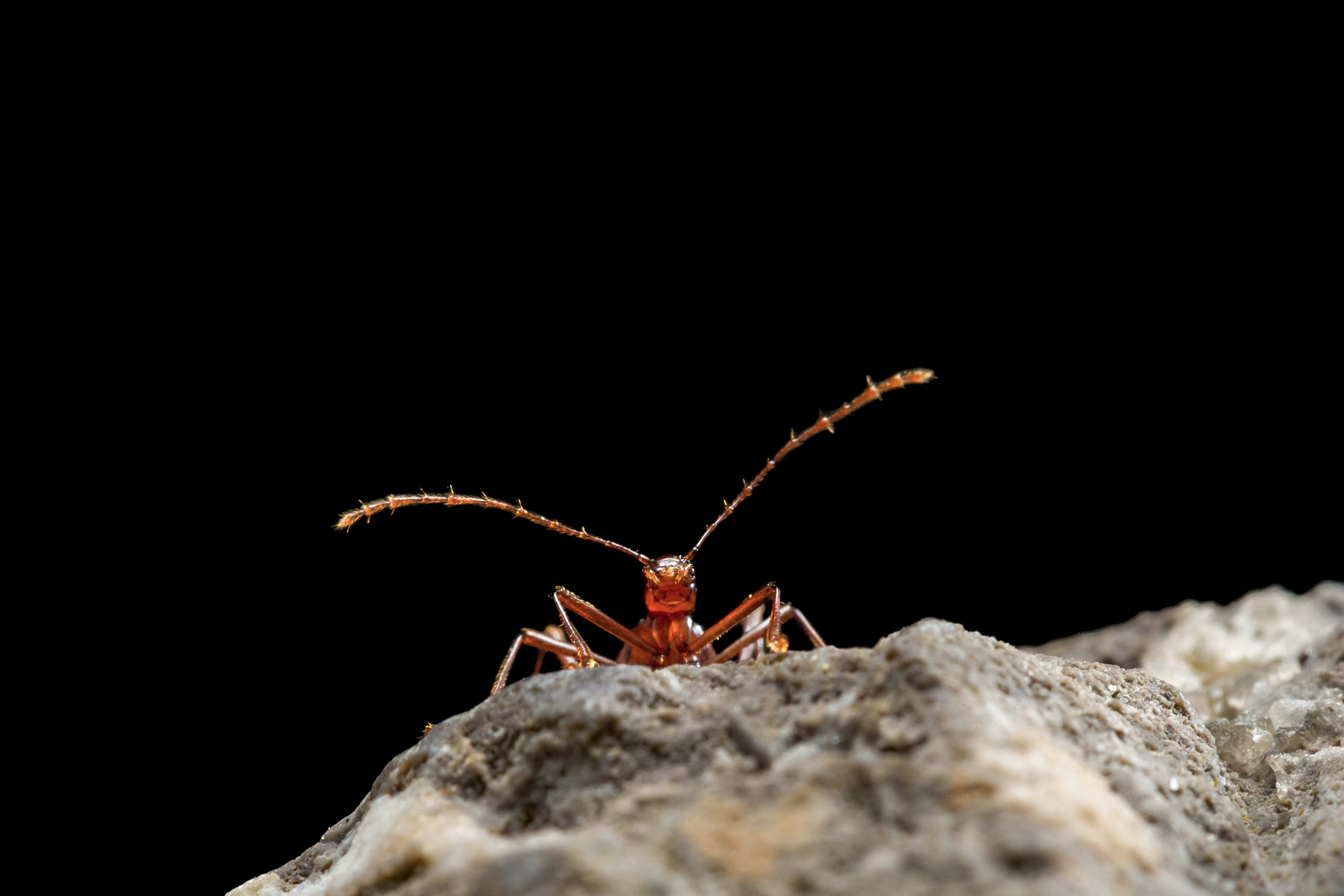Beetles underwent genomic changes that facilitated their adaptation to caves millions of years before entering them
Beetles underwent genomic changes that facilitated their adaptation to caves millions of years before entering them
Beetles underwent genomic changes that facilitated their adaptation to caves millions of years before entering them
An international study led by the IBE (CSIC-UPF) discovers the keys to the evolutionary process of subterranean beetles

For the first time, this research reveals the keys to the evolutionary process of a subterranean animal on a macroevolutionary scale, which spans between 6 and 30 million years of evolution. Research has found that the cave beetle's ancestors already underwent many genomic changes that would later facilitate their transition to the caves.
The results reveal that gene gain was key to adaptation to the subterranean world and that characteristic traits of subterranean species such as loss of vision and pigmentation are not necessarily linked to gene loss, as it is commonly believed. The study has also determined the two modes of evolution followed by these beetles (both parallel and convergent evolution), which will serve to investigate the keys to the adaptation of other subterranean animals.

Leptodirus hochenwartii Credit to Tvrtko Dražina
The study led by Rosa Fernández, a researcher at the Institute of Evolutionary Biology, a joint CSIC and UPF center (IBE, CSIC-UPF), compared different lineages of terrestrial and aquatic beetles of which several species had managed to colonize the underground world independently, and discovered that both groups shared an increase in genetic variability that facilitated their later adaptation to the caves. According to the results, the changes in the gene repertoire that would later facilitate the beetle's adaptations occurred millions of years before entering the subterranean world.
Contrary to the most widespread theory, the study has shown that it was this increase in genetic diversity that allowed the beetles to adapt to caves, and not just the genetic loss associated with traits that determine some adaptations, such as loss of pigmentation or vision.
The study has also determined that this evolutionary process was both parallel, with similar changes in the same genes in different species, and convergent, with similar changes in different genes performing the same function.
The adaptation of the beetles to the caves happened before their incursion into them
More than 300 million years ago, the order of beetles was divided into two main lineages: one mainly formed by terrestrial beetles and another that includes most of the aquatic beetles too. As a result, this great order of insects continued to diversify for millions of years until several of its lineages conquered the subterranean environment.
This study compared with genomics tools contemporary species of 6 different lineages of subterranean and surface beetles, all of which come from widely separated ancestral lineages. However, the study did not find a large genetic difference between the subterranean and surface species. On the contrary, in all cases, the changes were observed much earlier.

Phylogenetic position and ecology of the three beetle tribes studied. Photos: Paroster macrosturtensis © P. Balart-García (arriba); Troglocharinus elongatus © A. Miralles-Nuñez (abajo).
“Genomic changes in the gene repertoire are observed before the colonization of the caves. In these ancestors there were more genetic changes than between the close species from the caves and their terrestrial sister species”, Rosa Fernández, principal investigator of the IBE (CSIC-UPF) who has led the study, says.
The results point out a case of evolutionary exaptation, which occurs when a trait, characteristic, or structure of an organism or taxonomic group assumes a function that did not previously exist or that differs from the original function derived from its evolution. An example of this could be the use of feathers for mating or flight in birds, which originally developed feathers to keep warm.
Dismantling Darwin's "evolutionary wrecks"
The loss of vision and pigmentation in animals that live underground, among others, is related to the loss of the genes related to these traits due to an environment as restrictive as caves, as defended by the motto "Use It or Lose It." For this reason, Darwin believed that the animals that entered this environment were “evolutionary shipwrecks” that would degenerate and could not emerge again. The results of the study, however, contradict this.
The research found there was more gene gain than gene loss in the beetles' adaptation to the caves.
“Gene duplication and gain played a fundamental role in colonization and subsequent adaptation to the deep subterranean environment. This mechanism could be the key to better understanding the adaptations of these animals, beyond the loss of genes.” Pau Balart-García, researcher at the IBE (CSIC-UPF), and first author of the study, points out.
Thus, this study refutes the theory of the genetic repertoire being simplified as a mechanism of adaptation to this subterranean environment.

Astagobius angustatus. Credit to Tin Rožman
Unveiling the keys to the evolution of subterranean animals
Until now, it was believed that convergent evolution was the main force shaping the genomes of subterranean animal species and would result from similar changes in different genes or gene families that would carry a very similar function, such as the loss of vision. Parallel evolution, on the other hand, is observed between the same gene families that underwent similar changes, such as expansions or contractions.
This study shows that both modes of evolution are responsible for facilitating cave adaptation in totally different subterranean beetle species. This discovery facilitates the investigation of the evolution of other subterranean animals in future studies, such as mollusks, scorpions, or salamanders, and may help to better understand the genomic basis of adaptation to caves.
Reference Article: Pau Balart-García1*, Leandro Aristide1, Tessa M. Bradford2,3, Perry G. Beasley-Hall2,3, Slavko Polak4, Steven J. B. Cooper2,3, Rosa Fernández1* .2023. Parallel and convergent genomic changes underlie independent subterranean colonization across beetles. Nature Communications. https://doi.org/10.1038/s41467-023-39603-1
